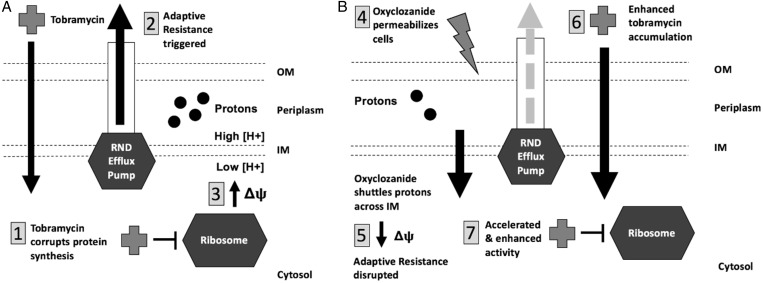Figure 11.
Oxyclozanide sensitizes P. aeruginosa to tobramycin by depolarizing the Δψ and further permeabilizing cells. (a) (1) Tobramycin corrupts protein synthesis triggering adaptive resistance, which includes the (2) induction of RND-type efflux pumps such as MexXY-OprM, resulting in reduced accumulation of tobramycin within the cytosol.42,43 (3) During this time, an increase in Δψ is observed driving RND-type efflux pump activity and providing temporary resistance to tobramycin. (b) (4) Oxyclozanide permeabilizes cells and (5) shuttles protons across the IM, depolarizing the Δψ. We hypothesize that both of these activities interfere with adaptive resistance (6), allowing for greater accumulation of tobramycin within cells resulting in (7) accelerated activity and increased effectiveness. OM, outer membrane; IM, inner membrane.

